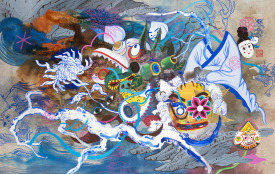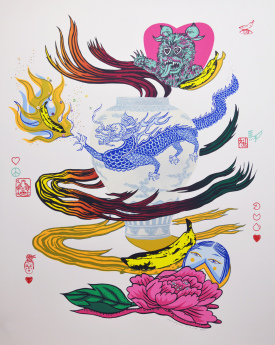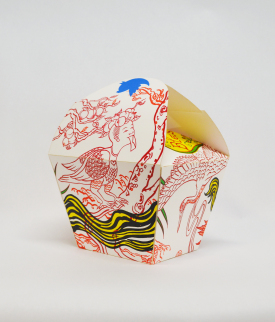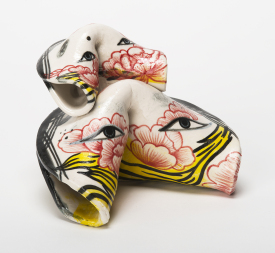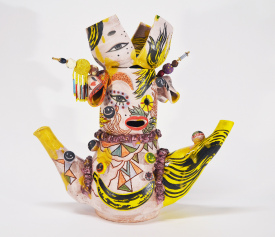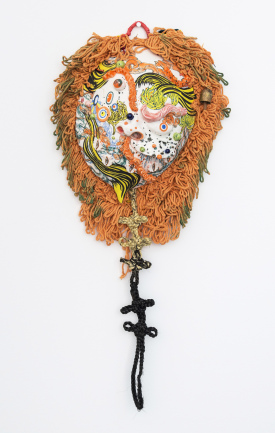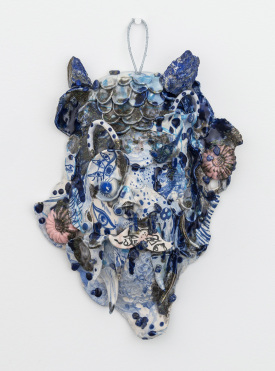Jiha Moon
by Lilly Wei
Race is not often a subject that many people want to engage in more than perfunctorily, even the best intentioned and most liberal among us—unless, of course, it is a subject that one must engage with because it affects every aspect of one’s life on a daily basis. Yet this is the summer of 2020, a time that will be remembered for a devastating pandemic (one that—to its credit?—is color blind but kills along socioeconomic/political lines that are not). It is also a summer that will be remembered for the horrific, widely disseminated images of police brutality that, this time, surely cannot be ignored. These two intersecting scourges compel us to acknowledge once again issues of race in America, especially the pernicious systemic injustices that subvert and corrupt American ideals that, as Langston Hughes notes in his poem “Let America Be America Again,” are those of a “land that never has been yet.” These cataclysmic events—and who knows what else might be added to this combustible mix in the coming days—have forced a deeper, more sustained dive into considerations of race and racism and, in turn, displacement and immigration.
Although Asian immigrants at times seem to have been “exempted” from discrimination, designated as the “model minority” (a divisive, patronizing, and contingent distinction), Korean American artist Jiha Moon has felt the exclusion and discrimination here that have afflicted all non-white peoples, including Native Americans who, let us not forget, were the original inhabitants of this land. Asians, like other communities of color, are trying to determine where their place is in the Black/White dialogue that is the primary discourse of race in America. Where might a common course, a common cause be found? And this time, we must emerge with solutions that are of lasting, inclusive consequence. This land must be rerouted toward what it could be, what it was meant to be: the great, shining, democratic hope of the world.
And what does this have to do with Jiha Moon? Well, for starters, she was born in Daegu, South Korea, and like many before her, came to the United States in search of greater opportunities. She earned a BFA and an MFA in Seoul before arriving here in her mid-twenties to study for another MFA. She eventually settled in Atlanta and has now spent roughly half her life in her native Korea and half her life here. Moon says because of this, she does not feel that she quite belongs to either culture, a feeling that has generated the imagery that festoons her work and comprises its core. Cunningly and imaginatively extracted and recombined, that imagery has been plundered from her dual legacies—as well as from further afield.
More vested in the social than the political, although the two are not ultimately separable, Moon views America through the keenly observant eyes and experiences of an émigré. She spins us through a revolving door of allusions that unmoors fixed perspectives and makes us rethink what is exotic and what is commonplace, what is elitist and what is pop, and what is American and what is not. In her repertoire, Lichtenstein-like depictions of brushstrokes are interweaved among decorative Asian fish-scale patterns, which might coalesce into a menacing shark (a nod to Steven Spielberg’s classic thriller Jaws?), and treacly Disney-like birds. Her roses are sourced from popular tattoo designs as well as motifs from Korean folklore. Peaches show up regularly, doubling as a classic Asian emblem of fecundity and longevity as well as a symbol of Georgia, the Peach State. Bananas also figure: (East) Asian Americans have been likened to them because they are yellow (hmm?) on the outside, white on the inside. And Moon’s coveted ceramic fortune cookies are loaded with signifiers, including the fact that, like hybrids everywhere, their origins are hard to pinpoint (maybe San Francisco via Japan but not China, that’s fairly certain). In YouandI (2015), a smaller cookie piggybacks on a larger one; both are sloe eyed and enticingly pink and plump, the cliché of the Asian temptress. One standout is the marvelous Kimchi (2019), a flamboyantly embellished vessel that is a nod to both the ubiquitous Korean side dish banchan and a well-known, similarly named Korean American drag queen. What Moon offers us as critiques are spoonfuls of sugar laced with bite. They might look Asian, she says, but they are really “all about America.”
Jiha Moon
Born in Daegu, Korea (1973)
Lives and works in Atlanta, Georgia
Jiha Moon’s gestural paintings, mixed media, ceramic sculpture, and installations explore fluid identities and the global movement of people and their cultures. Moon earned a BFA from Korea University in 1996 and an MFA from Ewha Womans University in Seoul in 1999. After immigrating to the United States, she earned an MA (2001) and MFA (2002) from the University of Iowa.
Moon’s works can be found in the collections of Asia Society, New York, NY; High Museum of Art, Atlanta, GA; The Mint Museum of Art, Charlotte, NC; Hirshhorn Museum and Sculpture Garden, Washington, D.C.; Weatherspoon Museum of Art, Greensboro, NC; and Virginia Museum of Fine Arts, Richmond, VA. She has received such awards as the Museum of Contemporary Art Georgia Working Artist Project (2012-2013), the Joan Mitchell Foundation Painters & Sculptors Grant (2011), and the Artadia Award (2016), among other honors.
Jiha Moon’s work was featured at the Halsey Institute in 2015 in Double Welcome, Most Everyone’s Mad Here. A catalogue by the same title was published by the Halsey Institute in 2017.
Lilly Wei
Lilly Wei (b. Chengdu, China) is a New York-based independent curator, writer, journalist and critic whose area of interest is global contemporary art, in particular emerging art and artists, writing frequently on international exhibitions and biennials. Her work has appeared in dozens of publications world-wide and she is a longtime contributor to Art in America, a contributing editor at ARTnews, and a former contributing editor at Art Asia Pacific in the United States. The author of numerous catalogues and monographs, she has curated exhibitions in the United States, Europe and Asia. Her most recent curatorial project is Without Borders: The Paintings of Brian Maguire at the American University Museum at the Katzen Arts Center, Washington D.C. Wei has an MA in art history from Columbia University, New York. Wei lectures frequently on critical and curatorial practices and sits on the board of several not-for-profit art organizations.



